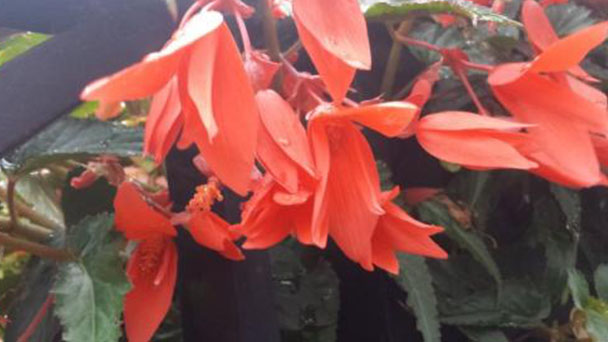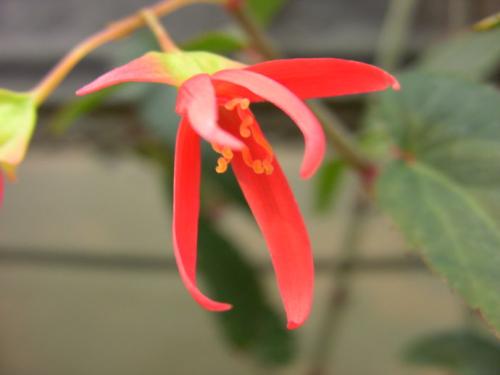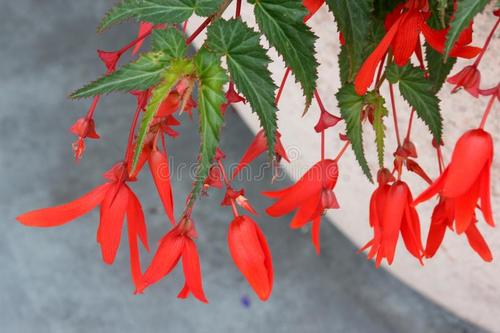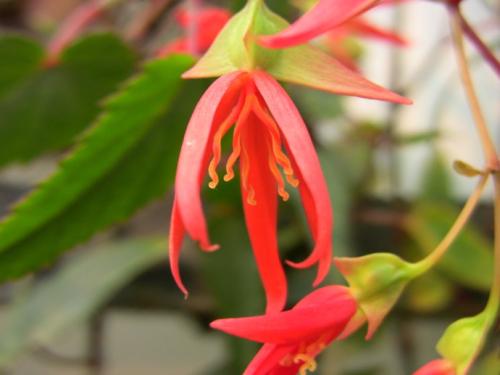Begonia Boliviensis: How to grow and care for it
Written by Maggie
Mar 30 2021

Begonia Boliviensis is a species of Begonia Boliviensis, suitable for hanging viewing.
Begonia Boliviensis picture
Begonia Boliviensis morphological characteristics
The tuber of begonia boliviensis is oblate spherical, the stem branches are relatively strong, drooping, for the green-brown, long leaves, ovate-lanceolate. The flowers are orange-red and summer blooming.
Begonia Boliviensis propagation
Cutting propagation
Begonia Boliviensis is a species of Begonia Boliviensis, suitable for hanging viewing. It is very sensitive to moisture and temperature, the illumination time should be about 14 hours, the cultivation temperature should be kept above 13℃, and need strong illumination intensity.
Begonia Boliviensis cold resistance is generally at 10℃. When the temperature is lower than this critical point, the growth will stagnate, and the heavy will be frozen to death. Therefore, in areas with relatively low temperatures in winter, the temperature of keeping warm should be considered.
Sowing propagation
If you want to raise Begonia Boliviensis, you can buy the summer flowers, collect the seeds, and plant them the next year, so you can avoid the embarrassment of having to buy them again the next year after the cold winter temperatures kill the plants. But the seeds of Begonia Boliviensis are small and dusty, making collecting them tricky.
In addition to sowing as mentioned above, bulbs and cuttings can also be used. In addition, in order to maintain the compact plant type of Begonia Boliviensis, full illumination is recommended instead of too little illumination.

How to grow and care for Begonia Boliviensis
Daily care of Begonia Boliviensis is relatively simple. Begonia Boliviensis should be maintained in a sunny and well-ventilated environment, and the soil in the basin should be kept moist but not wet because the insufficient water supply is likely to lead to wilting of the stem and leaves. And if the basin soil is too wet, it is easy to cause root rot.
Begonia Boliviensis main value
Begonias are mostly used as indoor potted flowers for viewing, and a few fibrous root species, such as the four seasons begonias, and can be used as flower beds.

Latest Updated
- Benefits of Bugleweed - 7 Science-backed Health Benefits
- Bugleweed Dangers & Side Effects - Is It Poisonous?
- How to Plant Evergreen Trees - What You Should Know
- When to Plant Evergreens - Grow Guide for Evergreen Trees
- 12 Wonderful Evergreen Shrubs for Your Garden
- 12 Popular Evergreen Plants with Pictures for Beginners
- When And How To Prune A Lilac Bush Like a Pro
- How to Grow & Care for Lilac Vine (Hardenbergia Violacea)
- Japanese Lilac Tree (Syringa Reticulata) Care & Propagation Guide
- Shumard Oak Pros and Cons - What to Know
Popular Articles
- Winter maintenance of Antirrhinum Majus
- How to Grow Terminalia Mantaly Tree
- How to Grow and Care for Crossostephium Chinense
- How to grow Antirrhinum Majus in spring
- Peristeria Elata (Dove Orchid) Profile: Info & Care Guide
- Underwatered Snake Plant (Sansevieria Trifasciata) - Signs And How To Fix
- How to Care for Brazilian Jasmine Plant (Mandevilla Sanderi)
- How to Grow & Care for Graptopetalum Purple Delight in Summer
- Rosa Chinensis (China Rose): Plant Growing & Care Tips
- How to Care for Baby Sun Rose (Aptenia Cordifolia)
